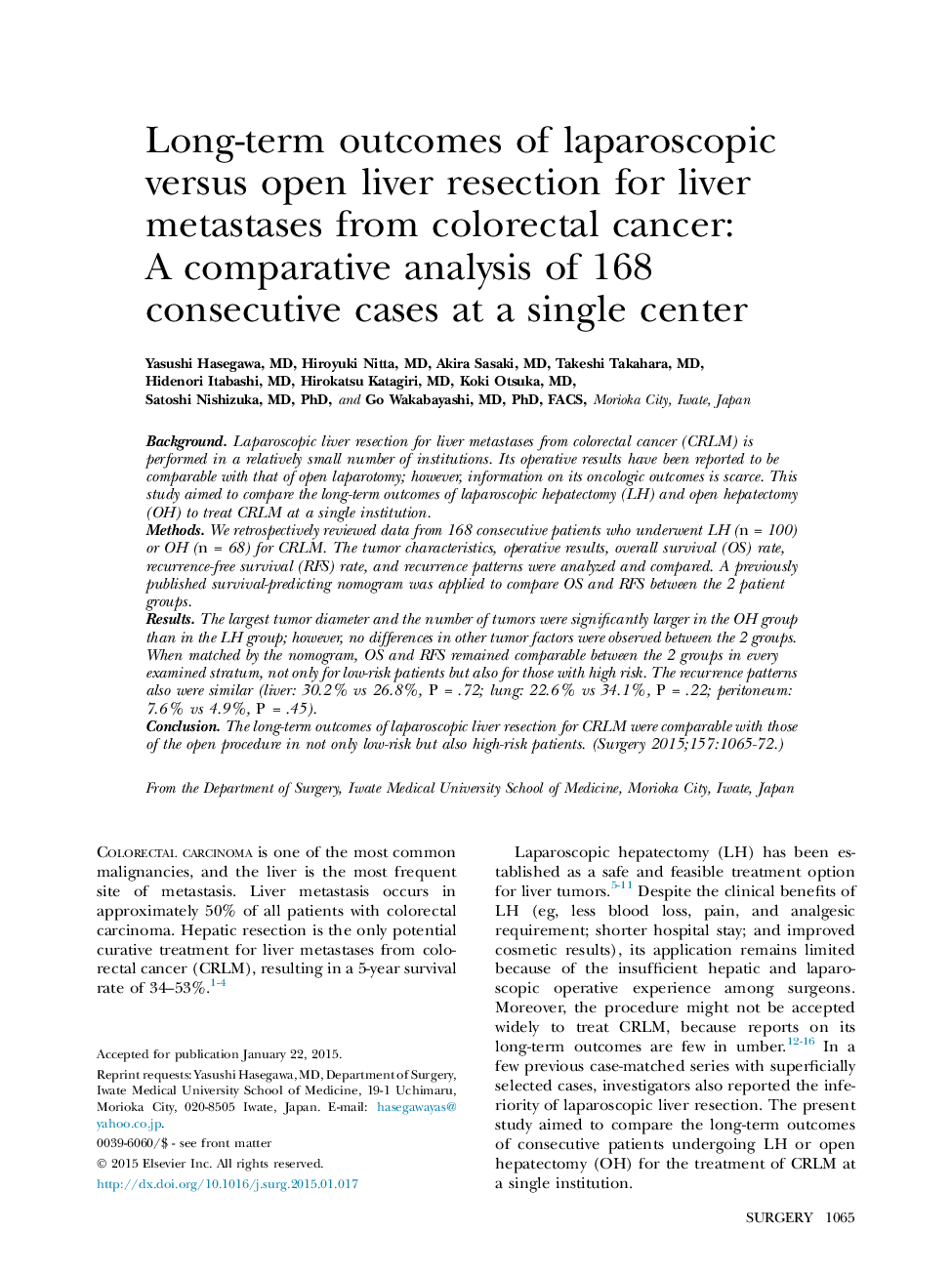| Article ID | Journal | Published Year | Pages | File Type |
|---|---|---|---|---|
| 6255147 | Surgery | 2015 | 8 Pages |
BackgroundLaparoscopic liver resection for liver metastases from colorectal cancer (CRLM) is performed in a relatively small number of institutions. Its operative results have been reported to be comparable with that of open laparotomy; however, information on its oncologic outcomes is scarce. This study aimed to compare the long-term outcomes of laparoscopic hepatectomy (LH) and open hepatectomy (OH) to treat CRLM at a single institution.MethodsWe retrospectively reviewed data from 168 consecutive patients who underwent LH (n = 100) or OH (n = 68) for CRLM. The tumor characteristics, operative results, overall survival (OS) rate, recurrence-free survival (RFS) rate, and recurrence patterns were analyzed and compared. A previously published survival-predicting nomogram was applied to compare OS and RFS between the 2 patient groups.ResultsThe largest tumor diameter and the number of tumors were significantly larger in the OH group than in the LH group; however, no differences in other tumor factors were observed between the 2 groups. When matched by the nomogram, OS and RFS remained comparable between the 2 groups in every examined stratum, not only for low-risk patients but also for those with high risk. The recurrence patterns also were similar (liver: 30.2% vs 26.8%, P = .72; lung: 22.6% vs 34.1%, P = .22; peritoneum: 7.6% vs 4.9%, P = .45).ConclusionThe long-term outcomes of laparoscopic liver resection for CRLM were comparable with those of the open procedure in not only low-risk but also high-risk patients.
